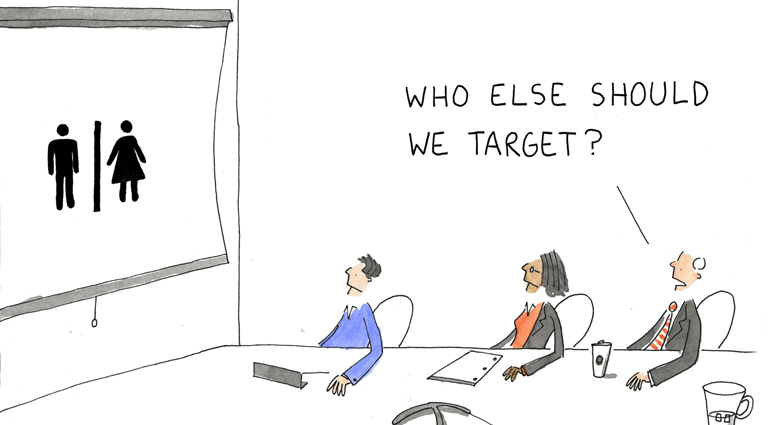In the same way China approached its preparations for the Beijing Olympics, businesses have fully detailed each sensory impression a product will have on consumers. One company's ultimate objective: Become a global leader in car manufacturing. Look out, Detroit.
There I stood, having just been given permission to see an area of a building that few were allowed to enter. As I opened the door to the first room, the unmistakable smell of freshly cut grass pervaded my senses. The air was misty, the colors were light green, and the Mandarin name of the room I'd just entered, translated, meant "The people from the Nordic countries." With my Danish background, it was comfortably familiar--the colors seemed lifted directly from the designer Arne Jacobsen's catalogue, the smell took me right back to my parents' garden, and the air was full of spring sounds Scandinavian birds make at dusk.
The building I found myself in was huge--about the size of a football stadium--and it was located some 200 miles outside of Beijing. With the same level of zeal its country used in preparing for the 2008 Beijing Olympics, this business was fully detailing each sensory impression its products will have on potential consumers. For this business, the objective is to become a global leader in car manufacturing. Here, thousands of cars were lined up to leave an ultra-modern production facility, which, until recently, featured all the familiar global brands. Now, there was a new take on it. The cars that stretched, row upon row, were all Chinese brands designed specifically to appeal to foreign markets.
The world soon will see the ability of the Chinese to absorb new ideas, and fast track them into the mainstream with accuracy, skill, and speed. In a very short time--despite a rocky start--they have grasped the essence of branding. In fact, their embrace of the fact that branding is a sensory discovery has put them ahead of others in the same industry operating on the other side of the globe.
Beside the Nordic room was another room, one that focused on precision and detail. Surprising details of how, for example, Germans perceive mechanical movement, compared to the Chinese idea. Looking at a sliding door, it opens slowly, then speeds up, before slowing down to a perfect stop. In contrast, the Chinese door would swish open quickly and stop with an abrupt bang. The colors: gunmetal gray, black, white, puce, and olive. The shapes: perfectly symmetrical. The sounds: deeply resonant. Overall--a very conservative feel. Welcome to Germany.
For almost three years, a team of scientists, researchers, anthropologists, and psychologists traveled the world to study the most inspirational and innovative countries in the world. They carefully selected the best features of those countries, focusing on those aspects that could influence the evolution of Chinese brands, shape their innovation process, define their future, and most importantly, serve as a model for their success.
It seems like history repeating itself. Way back in the 1980s, the Japanese developed their version of the "German Room." In order to surpass competing nations, they had to fully understand how they worked. They learned their lessons well, and Japan went on to build among the best-selling cars in the world.
China wants to be next. But they didn't start out as naturals at understanding how branding works.
Over the years I've worked with Chinese people, I've been somewhat taken aback by their perspective on the world. Their skill in producing sophisticated technological products is awe-inspiring. And yet, when it came to understanding the concept of branding, they seemed to struggle with the notion.
After spending weeks and weeks inside some of the largest Chinese companies teaching the fundamentals of creating an emotional brand, a CEO approached me, indirectly of course, to ask when we would begin work on creating the actual brand. For him, all the emotional stuff seemed irrelevant. The business was the product. This was particularly striking in light of the fact that, more than any others, the Chinese have an even greater passion for brands than, say, Russian or Japanese consumers. A recent study reveals that the average Chinese consumer feels the need to wear at least three branded items to feel comfortable at work. Yet, when probed further, they were at a loss, unable to define the features of a brand. However, they had no difficulty describing the product. It seems that for them, the product is the brand. The emotional connection is simply absent.
The world soon will see the ability of the Chinese to absorb new ideas, & fast track them into the mainstream.
The irony of this did not escape me as I found myself in this exclusive area of European sensibilities, the Nordic room and the German room. Especially given the fact that the very CEO who wondered when the "real" branding of his product was going to begin had commissioned more than 200 people to create an unprecedented database of the world's consumer profiles.
At the end of the day, that very same CEO was so proud as he asked me what I thought. The answer was obvious--I was more than impressed. I was intrigued to understand the end result of our work.
I asked him what he intended calling his new car. I imagined a Toyota-like name, or perhaps one with a German lilt. He looked at me, answering with absolute certainty, "It will be a Chinese name, of course." He was firmly convinced that the time has come for the Western world to understand that there's another language dominating the conversation, and that's Mandarin. He went on to explain that the brand would only be written in Chinese, because, after all, there are enough people in the world who speak and read Mandarin, and it may very well be to others' advantage to learn to do so, too.
In the same way as when he first asked me to focus more on branding in my training sessions, and then to subsequently see him learning and changing his mind, something altered in his demeanor. It was like the last word had been spoken. He meant what he said. Soon we will find it necessary to speak Mandarin--especially when buying the brands of tomorrow.





.png)




What Did You Think?